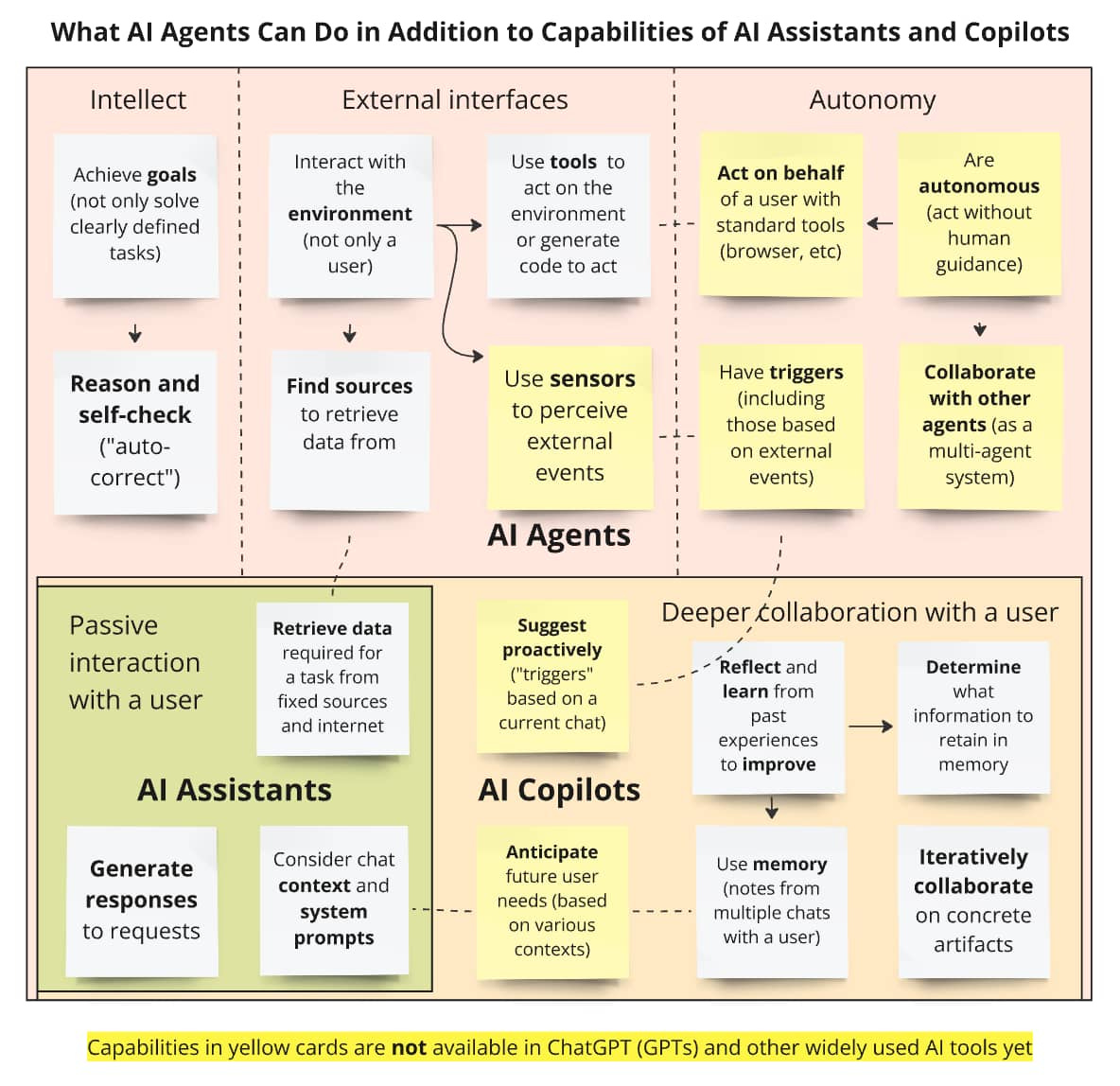Understanding ChatGPT’s Agent Mode
What It Can Do and How to Use It
The Game-Changing AI Feature That Actually Gets Things Done
Artificial intelligence is moving beyond chat and into the realm of action. In July 2025 OpenAI introduced Agent Mode in ChatGPT, a feature that allows the model to perform tasks autonomously by using a virtual computer. Instead of merely advising you on how to plan a party or summarise research, ChatGPT can now navigate websites, run code, interact with applications and produce deliverables on your behalf. This article explains what Agent Mode is, how it works, who can access it and why it matters for everyday users and professionals.
Table of Contents
🕖 TL;DR
🤖 What is ChatGPT Agent Mode?
🔑 Key Features and Capabilities
⚙️ How Agent Mode Works Under the Hood
🚀 Getting Started with Agent Mode
🌐 Real-World Use Cases
💰 Pricing and Availability
⚠️ Current Limitations and Challenges
🔒 Security and Privacy Considerations
🔮 The Future of AI Agents
💡 Tips for Getting the Most from Agent Mode
👀 Looking Ahead
TL;DR
Core Concept: ChatGPT Agent Mode provides the AI with a virtual computer for autonomous task execution, including web browsing, terminal operations, and service integrations, evolving it from a text advisor to an active performer of multi-step processes.
Key Features: Combines deep research, web interactions (e.g., form filling, navigation), code execution, file management, and connections to tools like Gmail and GitHub.
Architecture: Multi-modal system with reasoning models trained via reinforcement learning; selects tools dynamically with safety monitoring for risky actions.
Access: Available to paid subscribers (Plus, Pro, Team, Enterprise); initiate via interface, grant permissions, and observe real-time actions.
Applications: Supports business (e.g., dashboards, analysis), research (e.g., market studies), personal tasks (e.g., travel planning), and content creation (e.g., SEO).
Pricing: Tiered plans from $20/month (Plus: 40 uses) to higher for advanced needs; counts only user-initiated actions.
Limitations: Inconsistent completion for complex tasks, latency (5-30 minutes), compatibility issues, accuracy requiring verification, and no memory.
Security: Includes permissions, user overrides, and risk flagging; mitigate risks via limited access, monitoring, and separate accounts.
Future: Expected enhancements in reliability, memory, and integrations; will transform workflows amid competition.
Tips: Use specific prompts, start simple, iterate, review outputs, and target time-intensive tasks for maximum value.
What is ChatGPT Agent Mode?
ChatGPT Agent Mode is essentially giving ChatGPT its own computer to work with. Instead of being limited to generating text responses, the AI can now operate within a virtual environment that includes a web browser, terminal access, and integration with various online services and applications.
Think of it this way: traditional ChatGPT is like having a brilliant advisor who can give you detailed instructions on how to complete a task. Agent Mode is like having that same advisor actually sit down at a computer and complete the task for you, step by step, while you watch and provide guidance when needed.
The system operates through what OpenAI calls a "unified agentic architecture" that seamlessly combines three core components:
Deep Research capabilities allow the agent to conduct thorough, multi-step research a research analyst.
Operator functionality enables direct interaction with websites and web applications like clicking buttons, filling forms, navigating pages, and even logging into accounts when needed.
Conversational intelligence maintains the natural language interface that makes ChatGPT accessible, allowing you to describe complex tasks in plain English and receive clarification when needed.
Key Features and Capabilities
Agent Mode dramatically expands what ChatGPT can accomplish, moving far beyond simple text generation into active task execution. Here's how it compares to regular ChatGPT across key capabilities:
Virtual Computer Environment
At the heart of Agent Mode lies a sandboxed virtual computer that the AI can control completely. This environment includes:
Visual browser: Can interact with websites like a human user, clicking buttons, scrolling through pages, and navigating complex interfaces
Text-based browser: Optimized for quickly scanning and extracting information from web pages
Terminal access: Allows code execution, file manipulation, and command-line operations
File system: Can create, edit, and manage various file types including spreadsheets, presentations, and documents
Advanced Web Interaction
Unlike basic web browsing, Agent Mode can perform sophisticated online tasks including filling out forms, submitting applications, comparing products across multiple sites, and even handling basic e-commerce transactions (with user approval for sensitive actions).
Code Execution and Analysis
The agent can write, test, and debug code in multiple programming languages, create data visualizations, perform statistical analysis, and generate working applications—all within its virtual environment.
Integration Capabilities
Through OpenAI's connector system, Agent Mode can access and work with popular business applications including Gmail, Google Drive, GitHub, SharePoint, Microsoft Office, and many others, allowing it to pull data from your existing workflows.
How Agent Mode Works Under the Hood
Agent Mode represents a sophisticated fusion of multiple AI systems working in concert. The underlying technology combines a specialized reasoning model (part of the same family as OpenAI's o3 model) with enhanced tool-use capabilities trained through reinforcement learning.
The Technical Architecture
The system operates on what OpenAI describes as a multi-modal approach where the AI can intelligently switch between different tools based on the task at hand. For example:
When researching a topic, it might start with the text browser for quick information gathering
For interactive tasks like booking appointments, it switches to the visual browser
For data analysis or file creation, it utilizes terminal commands and code execution
For accessing your personal data, it leverages authenticated connectors
Training and Safety
The model has been specifically trained on complex, multi-step tasks that require tool coordination. OpenAI used reinforcement learning to teach the system not just how to use individual tools, but when to use which tool depending on the context and requirements of each task.
Safety measures are built into every level of the system. The agent operates under constant monitoring, with built-in classifiers that flag potentially risky actions in real-time. A dual-layer security system first identifies suspicious activity, then uses a reasoning model to determine if intervention is necessary.
Getting Started with Agent Mode
Accessing Agent Mode
Agent Mode is currently available to paid ChatGPT subscribers. To access it:
Log into your ChatGPT account (requires Plus, Pro, Team, or Enterprise subscription)
Navigate to the Tools dropdown in the chat interface
Select "Agent Mode" or simply type
/agentin the message boxGrant necessary permissions for any connectors you want the agent to use
Your First Agent Task
Start with something simple to get familiar with how the system works. Try asking the agent to:
"Research the top 5 marketing trends for 2025 and create a summary document"
"Find three Italian restaurants in [your city] with good reviews and compare their menus"
"Create a weekly meal plan with shopping list based on Mediterranean diet principles"
You can watch in real-time as the agent opens browser tabs, navigates websites, processes information, and creates deliverables. The system provides a running commentary of its actions, making it easy to understand what's happening at each step.
Real-World Use Cases
Agent Mode shines in scenarios that require coordination across multiple tools and data sources. Here are some of the most compelling applications:
Business and Professional Tasks
Executive Dashboard Creation: The agent can pull metrics from multiple business tools (Google Analytics, CRM systems, social media platforms), analyze trends, and create formatted presentations with key insights and recommendations—work that typically takes hours can be completed in minutes.
Competitive Analysis: Ask the agent to research your competitors, analyze their websites, gather pricing information, and compile everything into a comprehensive comparison report with actionable insights.
Meeting Preparation: The agent can review your calendar, find relevant background information on attendees, pull up recent email threads, and create briefing documents with talking points and agenda suggestions.
Research and Analysis
Market Research: Agent Mode can conduct comprehensive market analysis by gathering data from multiple sources, analyzing trends, and creating detailed reports with visualizations and recommendations.
Academic Research: The system can navigate academic databases, compile sources, analyze papers, and create well-structured research reports with proper citations.
Investment Analysis: Financial professionals are using Agent Mode to analyze stocks, gather earnings data, create financial models, and generate investment thesis documents.
Personal Productivity
Travel Planning: The agent can research destinations, compare flight prices, find accommodations, create itineraries, and even handle basic booking tasks (with your approval).
Event Planning: From researching venues to creating guest lists and managing vendor communications, Agent Mode can handle the complex coordination that event planning requires.
Learning and Skill Development: The agent can create personalized learning paths, find relevant resources, track progress, and even generate practice exercises for skill development.
Content Creation and Marketing
Content Strategy Development: Agent Mode can analyze competitor content, identify trending topics, create content calendars, and even draft initial versions of blog posts or social media content.
SEO Analysis: The system can perform keyword research, analyze competitors' SEO strategies, and create optimization recommendations with supporting data.
Pricing and Availability
Understanding the cost structure is crucial for determining if Agent Mode fits your needs and budget:
Usage Limits and Counting
It's important to understand how usage is calculated. Only user-initiated actions count toward your monthly limit:
Starting a new task
Interrupting an ongoing task with new instructions
Responding to critical questions from the agent
What doesn't count:
System confirmations and status updates
Authentication steps
Most clarifying questions from the agent
Providing login credentials
Cost Considerations
For individual users, the Plus plan at $20/month with 40 agent uses might be sufficient for occasional automation tasks. However, power users who plan to integrate Agent Mode into their daily workflow will likely need the Pro plan.
Businesses should consider the Team plan, which provides a good balance of features and usage limits for collaborative environments. The per-user cost can be justified quickly when you consider the time savings on tasks like report generation and competitive analysis.
Current Limitations and Challenges
While Agent Mode represents a significant advancement, it's important to understand its current limitations to set appropriate expectations.
Performance and Reliability Issues
Task Completion Inconsistency: Agent Mode doesn't always successfully complete complex tasks on the first try. Users report success rates varying significantly depending on task complexity, with simpler tasks (like basic research) working much better than complex multi-step workflows.
Speed and Latency: Tasks typically take between 5-30 minutes to complete, depending on complexity. For simple information gathering that you could do manually in a few minutes, the agent might not always be faster.
Website Compatibility: Some websites block automated access or have complex authentication systems that can confuse the agent. Popular sites like Reddit and some social media platforms have implemented measures specifically to prevent AI agent access.
Accuracy and Quality Concerns
Context Understanding: While Agent Mode is impressive, it can sometimes misinterpret task requirements or make assumptions about what you want. Clear, specific instructions are crucial for success.
File Creation Quality: Generated presentations and spreadsheets often require human review and editing. The agent is better at creating starting points than polished final products.
Data Verification: The agent doesn't always verify information accuracy, so fact-checking is still necessary, especially for important business decisions.
Technical Limitations
Memory Constraints: Unlike regular ChatGPT conversations, Agent Mode currently has disabled memory features for security reasons, meaning each task starts fresh without context from previous interactions.
Authentication Complexities: While the agent can log into various services, the process isn't always smooth, and some sites may require additional verification steps that can interrupt workflows.
File Format Restrictions: The agent works best with common file formats and may struggle with specialized software or proprietary formats.
Security and Privacy Considerations
Agent Mode's ability to take real-world actions raises important security and privacy questions that users must carefully consider.
Built-in Security Measures
OpenAI has implemented several layers of protection:
Permission-Based Actions: The agent asks for explicit permission before taking consequential actions like making purchases, sending emails, or modifying important documents.
Takeover Mode: Users can interrupt the agent at any time and take manual control of the browser for sensitive operations.
Risk Classification: The system automatically identifies and flags potentially risky tasks, requiring additional confirmation before proceeding.
Privacy Risks
Data Exposure: Since the agent operates with your login credentials, it has access to the same information you do. This means potential exposure of sensitive business data, personal information, and confidential documents.
Audit Trail Gaps: Actions performed by the agent using your credentials appear in system logs as if you performed them personally, which can complicate compliance and accountability tracking.
Prompt Injection Vulnerabilities: Malicious websites could potentially trick the agent into performing unintended actions by embedding hidden instructions in web content.
Best Practices for Safe Usage
Minimize Access: Only connect the services and accounts absolutely necessary for your specific tasks. Don't give the agent access to highly sensitive systems like banking or core business systems.
Regular Monitoring: Watch the agent's actions in real-time when possible, especially during the initial uses with new types of tasks.
Verification Steps: Always review and verify important outputs before using them, especially for business-critical documents or analysis.
Separate Accounts: Consider using dedicated accounts with limited permissions for agent tasks rather than your primary business accounts.
The Future of AI Agents
Agent Mode represents just the beginning of what's possible with agentic AI. The technology is evolving rapidly, and we can expect significant improvements in the coming months and years.
What's Coming Next
Improved Reliability: OpenAI is actively working on reducing failure rates and improving task completion success. The company has indicated that regular updates will enhance the agent's ability to handle complex workflows.
Enhanced Memory: Memory capabilities are likely to return once OpenAI resolves the security concerns, allowing agents to maintain context across multiple interactions and learn from past successes and failures.
Better Integration: Expect to see deeper integration with popular business tools and potentially native agent capabilities built into other software platforms.
Competitive Landscape: Google is developing similar capabilities for Gemini, and Anthropic is advancing Claude's computer use features. This competition will accelerate innovation and likely drive down costs.
Industry Impact
Workforce Evolution: Agent Mode and similar technologies will likely reshape many knowledge work roles, automating routine tasks and allowing humans to focus on higher-level strategy and creativity.
Business Process Transformation: Companies are already exploring how to integrate AI agents into their workflows, potentially revolutionizing everything from customer service to financial analysis.
New Business Models: Entirely new types of businesses and services built around AI agent capabilities are likely to emerge, creating opportunities for entrepreneurs and developers.
Tips for Getting the Most from Agent Mode
Based on early user experiences and testing, here are key strategies for successful Agent Mode usage:
Creating Effective Prompts
Be Specific but Flexible: Provide clear objectives and constraints, but avoid being overly prescriptive about the exact steps. Let the agent determine the best approach while giving it enough context to make good decisions.
Include Context and Constraints: Always specify deadlines, budget constraints, quality requirements, and any limitations or preferences that might affect the approach.
Example: Instead of "research competitors," try "research our top 3 competitors in the sustainable packaging market, focusing on their pricing strategies, key differentiators, and recent product launches. Create a comparison table with actionable insights for our Q4 strategy."
Managing Expectations
Start Simple: Begin with straightforward tasks to understand the agent's capabilities and limitations before attempting complex workflows.
Plan for Iteration: Expect to refine and repeat tasks. The agent might not get everything perfect on the first try, but it often provides a solid foundation that you can build upon.
Review Everything: Treat agent outputs as drafts that need human review and refinement, especially for important business documents or decisions.
Maximizing Value
Focus on Time-Intensive Tasks: Agent Mode provides the most value for tasks that would take you hours to complete manually—comprehensive research, multi-source data compilation, or complex analysis projects.
Leverage the Transparency: Use the ability to watch the agent work as a learning opportunity. You might discover new tools, websites, or approaches that you can use in your own work.
Document Successful Patterns: Keep track of what types of prompts and tasks work best for your specific needs, and build a library of effective approaches.
Looking Ahead
Agent Mode signals a shift from conversational assistants to full‑fledged AI co‑workers. By combining reasoning with tool use, ChatGPT can relieve users of repetitive or complex digital work like planning events, compiling research reports or automating administrative tasks.
ChatGPT Agent Mode represents a significant leap forward in AI capability, transforming ChatGPT from a conversational tool into an active digital assistant. While it's not perfect and requires careful consideration of security and privacy implications, it offers genuine productivity benefits for those who understand its strengths and limitations.
The technology is still evolving rapidly, and early adopters who learn to work effectively with AI agents now will be well-positioned to take advantage of even more powerful capabilities as they develop.
Sources:
OpenAI Official Announcement - Introducing ChatGPT agent: bridging research and action
OpenAI ChatGPT agent System Card - Technical Safety Documentation
Tom's Guide - ChatGPT Agent supercharges AI to carry out tasks
Understanding AI - ChatGPT Agent: a big improvement but still not very useful
Content was researched with assistance from advanced AI tools for data analysis and insight gathering. 
















